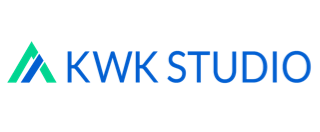This was originally published in Forbes. To read the full article click here.
I often get a lot of questions about the difference between various aspects of a digital marketing strategy, but more recently, I’ve been working with companies that want to understand what should be in their arsenal so they can implement a plan for their online presence.
In this article, I’ll explain some of the key digital sites you’ve likely heard of and when it is best to use them.
1. Website
A website is generally going to be a company’s largest self-controlled online destination for the world to see. A good website will house information on the business, its value proposition, products/services, contact details and other information that people who view it find useful.
It is a way for a company to showcase and communicate key aspects of what they do to the outside world. Oftentimes, when someone Googles a business, its website is the first thing to show up in results. The content should be focused on the end users and how you can help solve their problem.
Pro tips: Make sure your site loads fast, follows SEO best practice, is optimized for the mobile experience and is easy to navigate so users can find the content they’re looking for in seconds.
2. Blog
A blog, which is short for “web log,” is a place for a company to create and publish thought leadership, updates and other information that is relevant to a company’s end users. It is an important part of your content strategy; if leveraged correctly, it’s not only a great way to get better SEO rankings, aka more eyes on your site, but also to stand out as a thought leader and give prospective clients more confidence in your brand.
Pro tips: Don’t have a blog for the sake of having one. Ensure you are putting relevant content up regularly. If you’re not, consider removing the date of the post. As well, once you implement a targeted marketing plan using digital ads, set up conversion tracking for people who visit your blog (and website) because it could be a cost-effective way of identifying qualified prospects.
3. Landing Page
A landing page is a dedicated page that has specific content on it. It is most commonly used when running ads. When people click on ads, they expect to see specific content about the subject of the ad. Landing pages allow businesses to increase customer conversions/leads by letting customer quickly access exactly what they want.
For example, a marketing company might run an ad targeting people who are interested in implementing a digital marketing strategy. The ad might promote a whitepaper titled “Eight Things Every Digital Marketing Strategy Must Have.” When users click the ad, the landing page will load describing the white paper and the value it offers. Since landing pages are also lead generation tools, it will ask the user to submit their contact details in order to access the white paper. From a business perspective, you have a new prospect and from the users perspective, they now have a useful white paper.
Pro tip: Remove information from the page that is not relevant to what the user is expecting to see. This will distract them and decrease their chances of converting into a lead. Also, remember to optimize the experience on both desktop and mobile.
4. Web Application/Platform
This one really sits outside of the marketing realm in most cases. The three things I listed above ultimately help users get to know your business and the value it can offer. A web application or platform is the tool/solution a customer will gain access to (depending on your product) once they pay for your services. A user will often need special login credentials to access the information.
Web applications have their own code base, logic and generally require much more time and effort to develop than a website. It is important for people to understand that a website and web application are different, and the skill sets required to make them are different.
Pro tip: Consult with someone who understands technology well if you need a true web application complete. These often take a lot of time to create.
Putting It All Together
Here is a basic example of how a business can use all of tools listed above.
• Create a website so that your business has an online presence and can be discovered.
• Create regular blog posts that your customers find useful. This will help build your following and brand credibility.
• Create a landing page(s) that has a specific offer.
• Put proper tracking/analytics in place and then run ads promoting what is covered in your landing page.
• For the people who convert into leads on your landing page, meaning they submitted their contact details, enter them into a sales funnel.
• For people who didn’t convert, retarget them with different ads that link to other landing pages.
Having an effective online strategy can be challenging, but you can use the strategies outlined above to lay a basic foundation and improve as you go.
Share on facebook
Share on twitter
Share on linkedin
Share on whatsapp
Share on email





